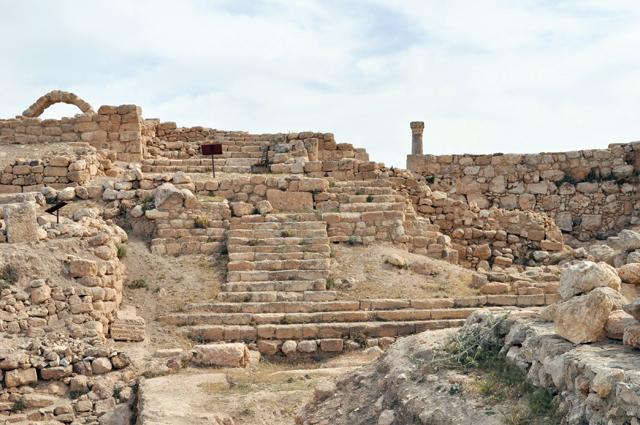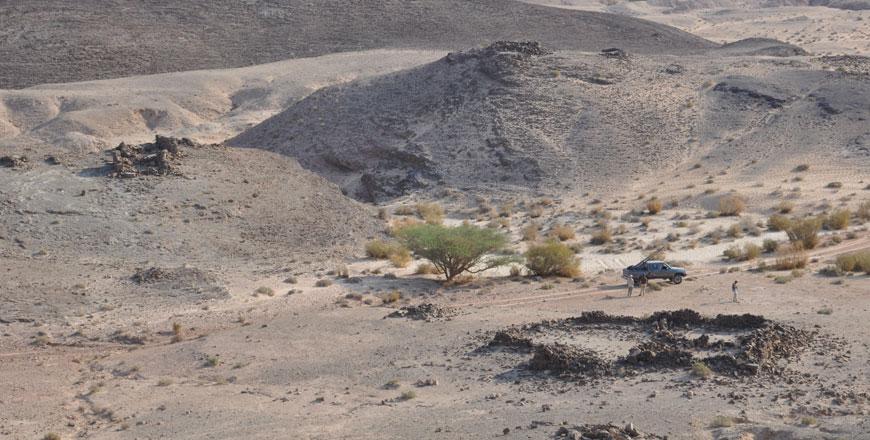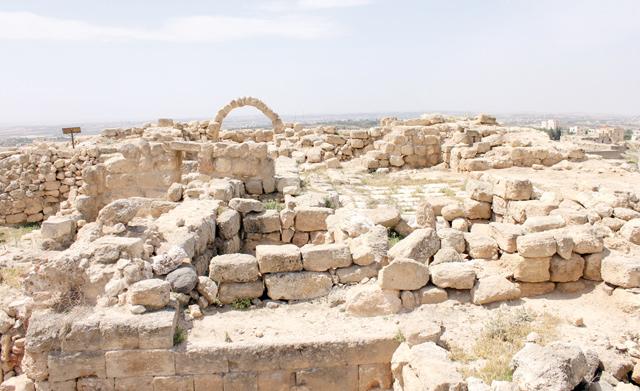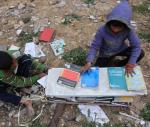You are here
Syrian scholar uses ancient pottery to trace history of Tell Hisban
By Saeb Rawashdeh - Feb 06,2022 - Last updated at Feb 06,2022

The entrance to the Hisban Citadel (Photo courtesy of The University of Bonn)
AMMAN — By the 14th century, Tell Hisban, located around 25km south of Amman, significant centre of pottery, according to a Syrian scholar.
The ancient town was a district capital of the Mamluk Empire, housing a military garrison and a market place that supplied the central Transjordan with agricultural produce, according to Salama Kassem from the University of Bonn.
Tell Hisban was also a significant centre of pottery, Kassem added.
“By studying the chemical and mineral composition of the clays of the site’s pottery, we have discovered that a range of fine, wheel-made wares were produced there at this time, and that it was a centre for ceramic production,” noted Kassem, who is studying to what degree wares from Tell Hisban were sold to surrounding villages.
“The glazed pottery made here was mass-produced and included yellow-glazed bowls. These were everyday table wares and were used in households where glass vessels were also used,” said Kassem in a recent e-mail interview with The Jordan Times.
Hisban is a special case for Mamluk pottery, Kassem elaborated, adding that while many basic glazed wares, water jars, and, handmade pieces, were made locally, many other kinds of pottery were imported.
“These came mostly from the centre of Damascus, Cairo, and possibly Jerusalem. Fritware [stone paste] serve as an example of such an imported ceramic group. The closest ties for Mamluk Hisban were with Damascus, a city that had connections in the area, “ she said.
Moreover, the non-plastic materials that were required for the manufacture of the bodies of the majority of studied ceramic groups are available in Hisban and its surroundings, giving a strong indication of local production, Kassem said.
She added that the preliminary conclusion is that there were different workshops and/or sources of glazed pottery to provide the archaeological site of Hisban with these profoundly important objects of daily use.
“The firing process supports this hypothesis, as in the case of fritware, the body and the glaze are applied together and then fired, while for the other ceramic groups, the lead glaze was applied to already fired vessels,” Kassem said, stressing that this would be due to lead, the key component of non-frit glazes, not being available on site and therefore having to be imported.
She said her material analysis of pottery allows her to trace connections between villages in terms of the pottery they made, traded and used.
“As we discover where pottery was made, how it was made and decorated, and what peoples’ preferences were for certain kinds of vessels and in what quantities, we learn much about which villages had social and economic ties to one another, and how intense these ties were,” Kassem noted.
Ceramic assemblages from Tall Hisban—Season 2021 (photo courtesy of Nikolaus Hochstein Cox)
Related Articles
AMMAN — Researchers are digging up hints of an important Ayyubid copper production site in Wadi Al Ghuwaybi, an American anthropological arc
AMMAN — Tell Abu Sarbut is located in the central Jordan Valley, among agricultural fields irrigated by small channels.
AMMAN — There has been a boom in studies devoted to the Mamluk period (1250-1517) due to a recent “rural turn” in Islamic archaeology, accor



















